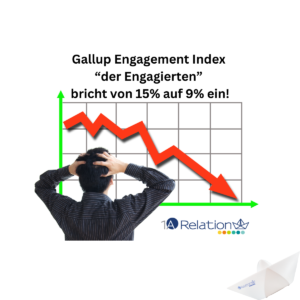Strategy and customer satisfaction are sometimes two difficult goals to reconcile. That’s why SAP is focusing on the cloud strategy. But this also means that SAP is messing with just under half of its customers.
SAP customers don’t have it quite so easy after all
If you ask around among SAP users, four points of criticism usually come up.
Complexity: Some customers find SAP products too complex and difficult to understand. The systems can be extensive and therefore often require specialized knowledge and training.
Costly: SAP products can be expensive to implement and license. This can be a financial burden, especially for smaller companies.
Ease of use: Some customers complain about the ease of use of SAP products. They can be perceived as cluttered or non-intuitive, which can make them difficult to use.
Upgrades and maintenance: Upgrading and maintaining SAP systems can be complicated and time-consuming. This can lead to interruptions in business operations and cause additional costs.
And now this: the SAP Executive Board has to achieve two diametrically opposed goals – cloud vs on-premise
But the Group’s Executive Board currently has to balance two diametrically opposed strategic goals: Driving forward the cloud strategy, with which the group wants to shine and earn good money, versus solving the brake block – which is nothing other than the question: How does SAP look after those customers who cannot or do not want to switch over so quickly.
At the DSAG user conference, there were the annual school grades. Only, something leaves a stale taste in users’ mouths. SAP has after the survey with decent results, announced:
“On-premise customers cut off from innovation?” On the DSAG website (DSAG is the association of SAP users), the searcher finds an article with just this snappy title. Ergo: SAP is messing with just under half of its customers.
Innovations no longer in on-premise, only in the cloud
And the accompanying text: “At SAP’s financial press conference on July 20, 2023, Christian Klein, CEO and member of the Executive Board, announced that SAP’s latest innovations will only be available in the cloud.
Specifically, they are to be available only to customers using SAP S/4HANA Cloud, Public Edition or SAP S/4HANA Cloud, Private Edition via GROW-with-SAP or RISE-with-SAP contracts. This does not mean that on-premise solutions in general will not be functionally enhanced.
But on-premise customers cannot, for example, benefit from major innovations such as artificial intelligence (AI) and green ledger. This also applies to larger function modules and extensions based on the Business Technology Platform (BTP). At the same time, SAP plans to increase maintenance fees. From the point of view of the German-speaking SAP User Group e. V. (DSAG), SAP is letting down numerous loyal customer companies with this approach.”
SAP takes on almost half of its customers
n bare figures, this means: According to a recent DSAG survey at the beginning of this year, 41 percent of customers are using S/4HANA in the on-premises version, eight percent are using the private cloud edition, and three percent are using the current SAP release in the public cloud. These figures also make it clear that just under half of customers have yet to make the S/4HANA switch. (Source: CIO.de)
“From DSAG’s point of view, this is a 180-degree turnaround from previous statements. SAP had previously claimed that it did not want to limit improvements to cloud-based offerings. The statement is a major blow. It amounts to a paradigm shift,” says Jens Hungershausen, DSAG board chairman.
AI only exists in the cloud
DSAG writes further: “The software manufacturer also announced specifically that it will not offer artificial intelligence (AI), generative AI and sustainability functions in on-premise versions. Corresponding functions are instead to be part of RISE-with-SAP and Grow-with-SAP contracts – although according to current information, this is to cost an additional 30 percent as an option for the premium package with the new innovations.”
That’s something like a top-game surcharge – only for a number of years.
In defense, you could say: Yes, that’s the way it is. The more you want, the more you pay. On the other hand, it is understandable that SAP wants to save itself the expense of providing and managing all the special features in two parallel worlds.
So this is what the balancing act looks like
Satisfy shareholders (cut costs and grow revenue) while selling innovation to customers.
From a customer loyalty perspective, that’s a pretty tough nut to crack – for almost half of SAP’s customers.
Is a two-tier society now emerging among SAP customers?
DSAG sums it up like this: It “… creates the impression that a two-tier society prevails at SAP with regard to customers.” Or put another way: “The announcement is a real show-stopper and a big disappointment,” says Thomas Henzler, DSAG Board Member for Licenses, Service & Support.
The customer is always right! Or is it?
SAP again argues with the programs launched in recent years, such as RISE (conversion of existing systems) or GROW (new introduction of SAP), which were supposed to support the conversion of customers to new systems. Only – also according to their own statements – some customers were not as fast and not quite as agile as they would have liked. So the idea with RISE was good, but the appetite or capacity was not big enough. Is the thesis “SAP is messing with just under half of its customers” not true after all?
Conclusion: A dilemma that needs to be solved.
The more pressure SAP puts on its customers, the more some of them switch to other systems. The longer SAP stays with the old systems, it will remain in the old world and will not be able to develop itself and its innovative customers as they would like. Christian Klein and his team are not to be envied. Because shareholders will be looking to see if he delivers. Whether customer satisfaction plays a role in this. I believe that less.
Update from 13.10.2023:
CIO.de once again reports SAP’s call: “SAP’s Cloud Software Reaches
CIO.de once again reports SAP’s call: “SAP’s cloud software functionally reaches ECC”.
“After many years, the major release that has now been published has functionally caught up with its predecessor, SAP ERP Central Component (ECC), explains Jan Gilg, president and chief product officer for cloud ERP at SAP. In recent years, users had repeatedly criticized SAP’s new product generation S/4HANA – especially the cloud editions – for having functional deficits compared to its ERP predecessors.
“The 2023 version of SAP S/4HANA Cloud, Private Edition, not only offers the full functionality of SAP ECC, but also brings together finance, manufacturing, operations and suppliers on a single common cloud platform,” Eric van Rossum, chief marketing and solutions officer for SAP’s cloud ERP, wrote in a blog post,” according to the CIO.de portal.
More info on SAP, e.g.
SAP at a glance and important news
SAP buys LeanIX, a cooperation partner (as at: 08.09.2023)












